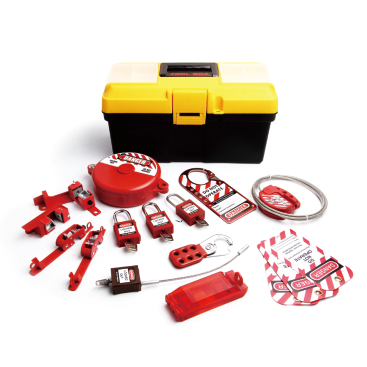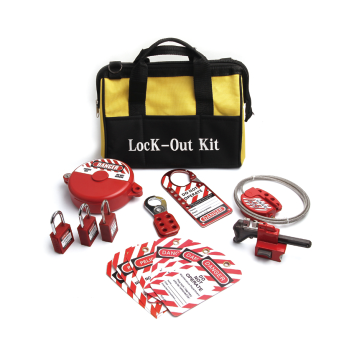Lockout/Tagout (LOTO) procedures are essential for safeguarding employees from hazardous energy sources during maintenance or repair activities. By isolating machines and equipment, LOTO procedures prevent accidental machine start-ups that could lead to serious injuries or fatalities. One of the key tools in ensuring these procedures are followed is the lockout/tagout kit. These kits contain the necessary devices to properly lock and tag equipment, ensuring that machines are safely de-energized and cannot be accidentally restarted during maintenance.
A lockout/tagout kit is a collection of safety devices designed to help companies implement proper lockout/tagout procedures. These kits are equipped with various tools that ensure hazardous energy sources, such as electrical, hydraulic, or mechanical energy, are fully isolated during maintenance.
Lockout/tagout kits typically include the following components:

The primary purpose of a lockout/tagout kit is to ensure worker safety. When equipment is being repaired or serviced, it’s crucial that the power is completely shut off. A lockout/tagout kit helps prevent unexpected startup by isolating all hazardous energy sources, thereby protecting workers from serious injuries like electric shocks, burns, or even fatal accidents.
Lockout/tagout kits also help businesses comply with industry regulations, especially those from OSHA (Occupational Safety and Health Administration). According to OSHA standards, it is required to isolate all energy sources before servicing machinery. Lockout/tagout kits enable organizations to meet these standards and avoid penalties or fines.
Another significant advantage of having a lockout/tagout kit is minimizing downtime. When maintenance teams have the proper tools, they can quickly implement lockout/tagout procedures, reducing the time spent securing machinery and allowing workers to focus on repairs. This efficiency ensures smoother operations and more predictable workflows.
Lockout/tagout kits are essential in various industrial settings, including:
To use a lockout/tagout kit properly, follow these basic steps:
For group lockout procedures, ensure that each worker places their personal lock on the energy-isolating devices, and only when all workers have completed their tasks, should the locks be removed.

By properly isolating machines and energy sources, lockout/tagout kits significantly reduce the risk of workplace accidents. Workers are protected from dangerous equipment startup and energy-related hazards, which can cause injuries such as cuts, electric shocks, and even fatalities.
In emergencies, a lockout/tagout kit ensures that workers can quickly and safely shut down equipment to prevent further damage or danger. These kits make it easier for emergency responders to isolate energy sources in a controlled manner.
Lockout/tagout kits help companies organize all necessary tools in one place. This ensures that LOTO procedures are followed consistently and correctly, reducing the chance of errors. A well-organized kit promotes a safer and more efficient work environment.
Though initially an investment, a lockout/tagout kit can save organizations money in the long run by preventing costly accidents and reducing downtime. By keeping workers safe and ensuring compliance with safety regulations, companies avoid medical costs, legal fees, and potential fines.
When selecting a lockout/tagout kit, it is important to ensure it meets OSHA, ANSI, and other relevant standards for energy control. This guarantees that the kit is suitable for use in regulated industries.
Choose a lockout/tagout kit that includes high-quality, durable materials such as stainless steel or heavy-duty plastic. These materials will withstand harsh conditions and provide long-lasting protection.
Make sure the kit contains all the necessary components for your workplace, including lockout padlocks, tags, circuit breaker lockouts, valve lockouts, and group lock boxes. A comprehensive kit ensures that your LOTO procedures are thorough and effective.
Look for lockout/tagout kits that can be customized to suit the specific needs of your workplace. Some kits offer expansion options as your company grows or your safety requirements evolve.
Lockout/Tagout kits are indispensable tools for ensuring the safety of workers during maintenance and repair activities. These kits help isolate hazardous energy sources and prevent accidental machine start-ups, significantly reducing the risk of workplace injuries. By using a well-organized lockout/tagout kit, companies can comply with safety regulations, promote a safety-conscious culture, and minimize downtime, ultimately saving costs and enhancing operational efficiency.
